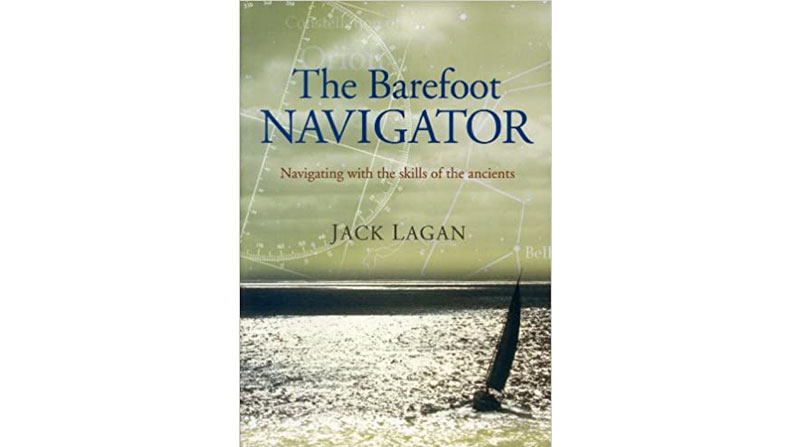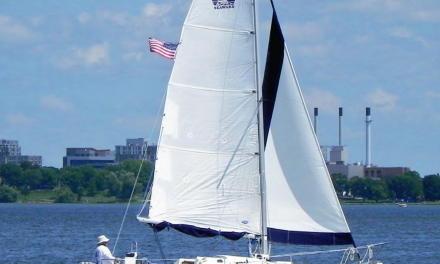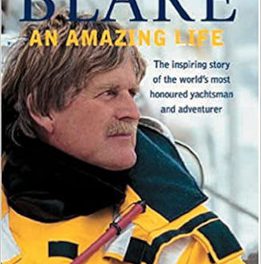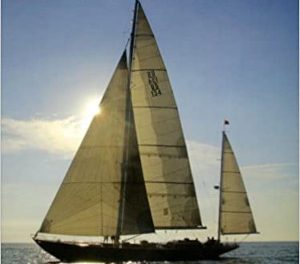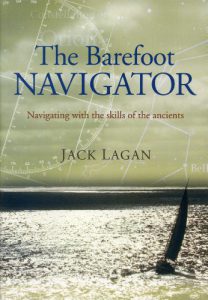 It’s wrong for hoary mariners to bemoan the evils of GPS and the loss of traditional navigational skills. Nonsense, as Jack Lagan points out in his Barefoot Navigator. His extended exploration of the art of navigation is not about ultra-precision, but an informed excursion through the arcane history of navigation and traditional navigational methods that are invaluable, even if you have all the seductive machinery of the electronic age to guide you. In Part 1, Lagan takes us on a six-essay exploration of the “skills of the ancients.” There are the usual Polynesians and Viking participants, but now refreshing to see respectful treatment of Arab navigators and the Indian Ocean, also of Chinese expertise, much underrated in the West. He ends with Portolan charts and other better-known tools of the Renaissance navigational toolkit.
It’s wrong for hoary mariners to bemoan the evils of GPS and the loss of traditional navigational skills. Nonsense, as Jack Lagan points out in his Barefoot Navigator. His extended exploration of the art of navigation is not about ultra-precision, but an informed excursion through the arcane history of navigation and traditional navigational methods that are invaluable, even if you have all the seductive machinery of the electronic age to guide you. In Part 1, Lagan takes us on a six-essay exploration of the “skills of the ancients.” There are the usual Polynesians and Viking participants, but now refreshing to see respectful treatment of Arab navigators and the Indian Ocean, also of Chinese expertise, much underrated in the West. He ends with Portolan charts and other better-known tools of the Renaissance navigational toolkit.
From history, we embark on Part 2, billed as a practical guide to no-tech navigation. Lagan treats of heavenly bodies, the waves, and ocean swells, finding direction and the sidereal compass. He takes us close to the ocean, to the telltale signs of clouds, birds, and refracted swells, arts that have been learned anew by those who apprenticed themselves to the last traditional Polynesian pilots. Above all, Part 2 is about being close to the ocean, about being in touch with its moods. Parts 3 and 4 are a primer on do-it-yourself navigation, crammed with common sense ideas on dead reckoning, celestial navigation made simple, and minimalist ways of finding latitude and longitude. We are back in the days of Captain Cook, the English yachtsman Claud Worth, and the Hiscocks, who lived close to the oceans they explored and had no electronics aboard. We forget how little time ago the Hiscocks were cruising. And, on a closing note, the author gives us “Survival Navigation”, including an essay on getting stranded and that all-important grab bag that so many offshore sailors forget. Just the appendices are worth the price of admission. When did you last see a table that lays out the Beaufort Wind scale?
Hagan has written a masterpiece of elemental pilotage and navigation, which is beautifully expounded, and authoritative. It’s a book to read and enjoy, to refer to again and again, and, above all, to take to sea and use. Just reviewing it, I went through its pages six times, and invariably found myself glued to my chair. Above all, this is a practical essay on basic navigational skills written by an able practitioner. It brought fond memories of my Atlantic crossing, where there were no electronics and we had to make landfall on a rock 38 feet above sea level. I admire the author and this book. Please take it with you.
Barefoot Navigator: Wayfaring with the Skills of the Ancients by Jack Lagan (Adlard Coles Nautical/Bloomsbury, 2nd Edition 2017)

